For Tesla owners in Australia, installing a home EV charger is generally the best option, offering cost savings and the convenience of waking up to a fully charged battery.
But how much does it cost to install a Tesla charger at home?
We breakdown everything you need to know in this comprehensive, beginner-friendly guide to help you navigate the costs and make an informed decision.
At Zecar, we’re passionate about empowering EV owners with expert insights into electric vehicles and charging solutions.
Get an EV Charger Installation Quote Today!▶️MORE: Tesla Charging Costs in Australia: Home and Superchargers (2025)
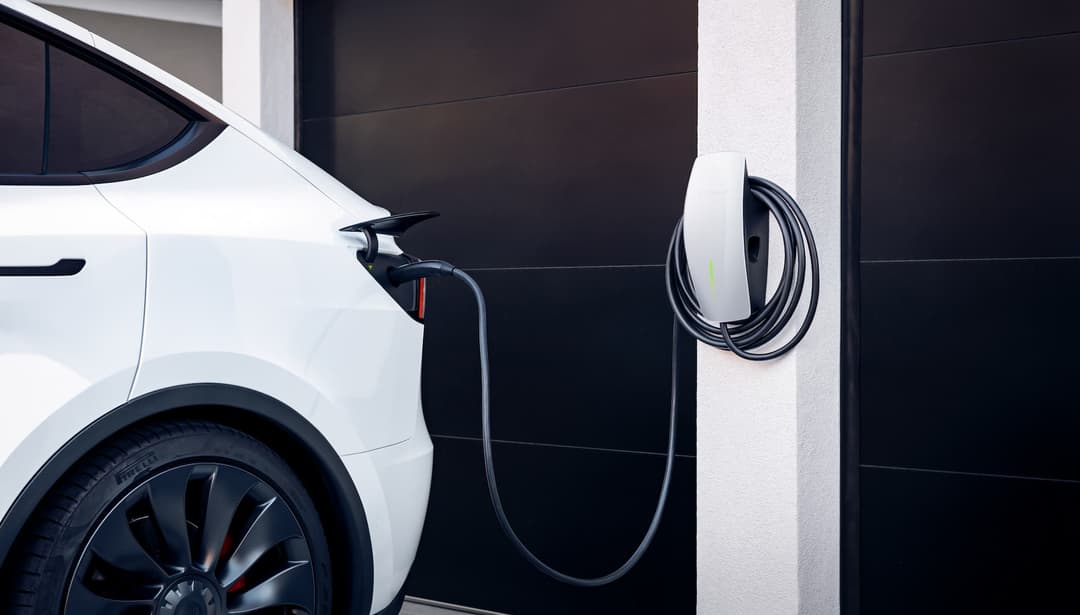
This guide covers the cost of a Tesla home charger in Australia. We break down installation prices, explain your options, and share tips to help you pick the best setup for your budget.
Why Install a Tesla Home Charger?
Charging your Tesla at home is the most convenient and cost-effective way to keep your EV ready for the road. Public charging stations are great for top-ups, but a home charger ensures you’re always powered up, especially for daily commutes.
Tesla offers two main home charging options: the Mobile Connector (a portable Level 1 charger included with most Tesla vehicles) and the Gen 3 Wall Connector (a powerful Level 2 charger).
▶️MORE: Tesla Model 3 & Y Home Charging Guide
Each has its place, but the Wall Connector is the gold standard for faster, more efficient charging. In this guide, we’ll walk you through:
- The types of Tesla chargers available
- Total cost to install a Tesla charger
- Factors affecting installation costs
- Detailed cost estimates for each option
- How to choose the right charger for your lifestyle
- Tips to save money and maximize value
Let’s dive into the details and help you budget for your Tesla charging setup!
Tesla Home Charging Options: Which One’s Right for You?
Tesla provides two primary charging solutions for Australian homes, each with different charger pricing and installation considerations. Understanding their differences is key to picking the right one for your needs.
1. Tesla Mobile Connector (Level 1 Charging)
The Tesla Mobile Connector is a portable charging cable included with most Tesla vehicles in Australia. It plugs into a standard 240-volt household outlet (10-amp or 15-amp) and is perfect for Tesla owners who drive shorter distances or have access to a suitable power point near their parking spot.
- Charge Rate: Up to 2.2kW (10-amp, ~15 km/hr) or 3.7kW (15-amp, ~25 km/hr).
- Best For: Light daily drivers (under 40 km/day), renters, or those with existing power points.
- Pros: Low cost, portable, no installation required if you have an outlet.
- Cons: Slower charging, not ideal for frequent long-distance trips or quick top-ups.
▶️MORE: Tesla Model 3 & Y Home Charging Guide
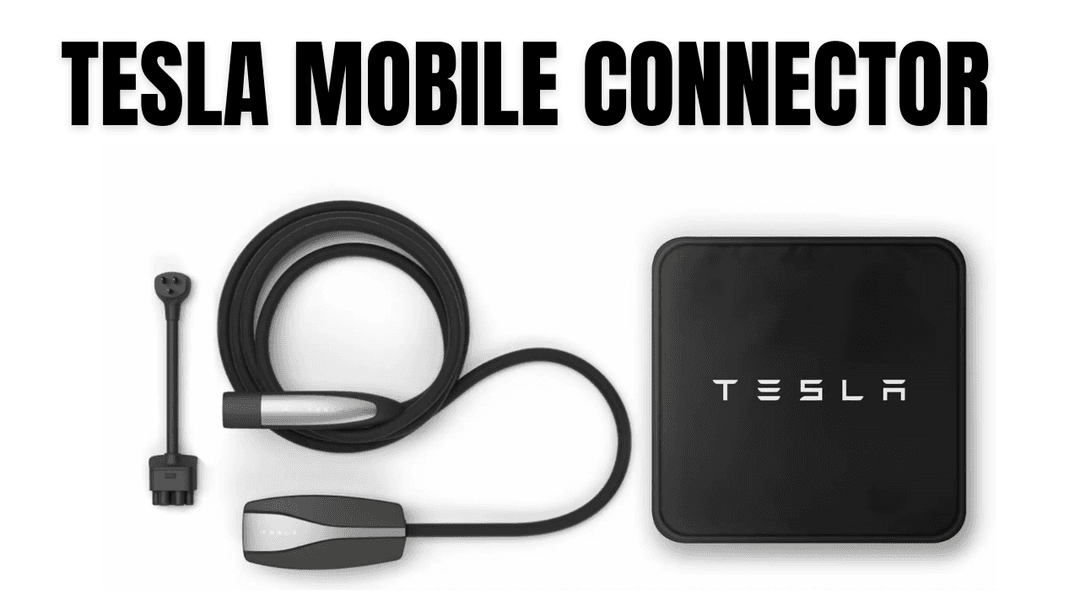
2. Tesla Gen 3 Wall Connector (Level 2 Charging)
The Tesla Gen 3 Wall Connector is a wall-mounted charger designed for faster, more efficient charging. It’s hardwired into your home’s electrical system and supports single-phase (7.4kW, ~40 km/hr) or three-phase (22kW, ~130 km/hr) power, depending on your home’s setup.
- Charge Rate: 7.4kW (single-phase) or 22kW (three-phase).
- Best For: Tesla owners with longer commutes, three-phase power, or those wanting fast charging.
- Pros: Faster charging, smart features (Wi-Fi, app control), sleek design.
- Cons: Higher upfront cost, requires professional installation.
▶️MORE: Tesla Model Y Charging Guide: Charge times, speed and cost
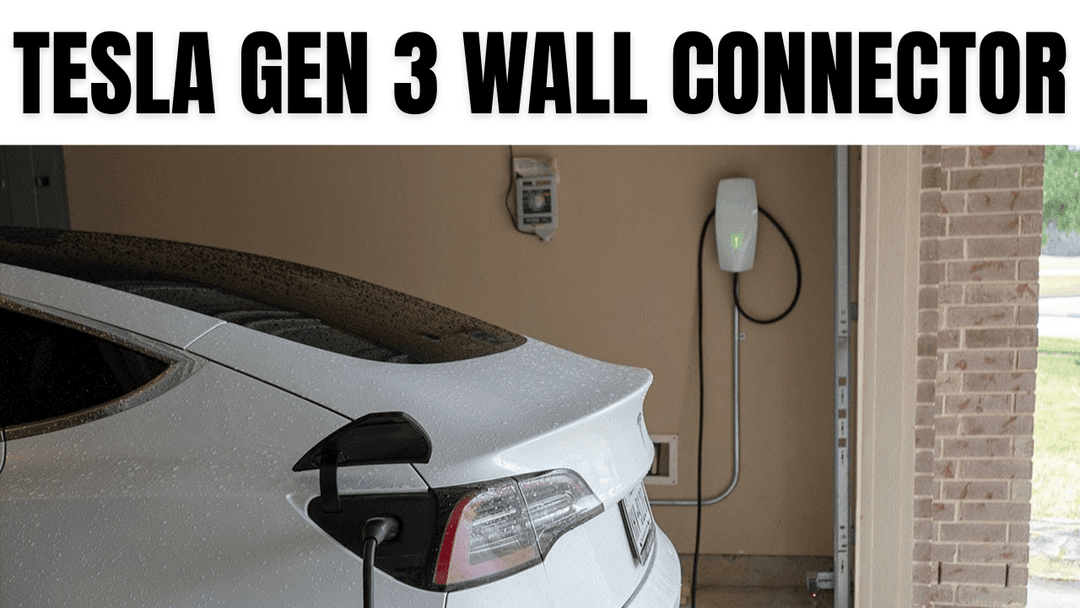
Why Choose the Wall Connector? For most Tesla owners, the Gen 3 Wall Connector is the better choice. It delivers significantly faster charging, making it ideal for busy schedules or homes with multiple EVs.
Its smart features, like solar integration and load balancing, also help you save on electricity costs by charging during off-peak hours or using solar power.
Factors Affecting Tesla Charger Installation Costs
The cost of installing a Tesla charger depends on several variables unique to your home and charging needs. Here’s what influences the price:
- Charger Type: The Mobile Connector is cheaper (often included), while the Wall Connector has a higher upfront cost.
- Electrical Setup: Single-phase homes (common in Australia) support up to 7.4kW, while three-phase homes can handle 22kW, affecting installation complexity.
- Distance from Switchboard: If your parking spot is far from your electrical panel, longer wiring or trenching increases costs.
- Electrical Upgrades: Older homes may need a dedicated circuit, switchboard upgrade, or new outlet.
- Location: Urban areas may have lower labor costs than rural or remote regions.
- Permits: Some local councils require permits, adding $100–$300.
- Solar Integration: Adding compatibility with a solar system may increase setup costs but save money long-term.
▶️MORE: Tesla Model 3 Bidirectional Charging (V2G and V2H)
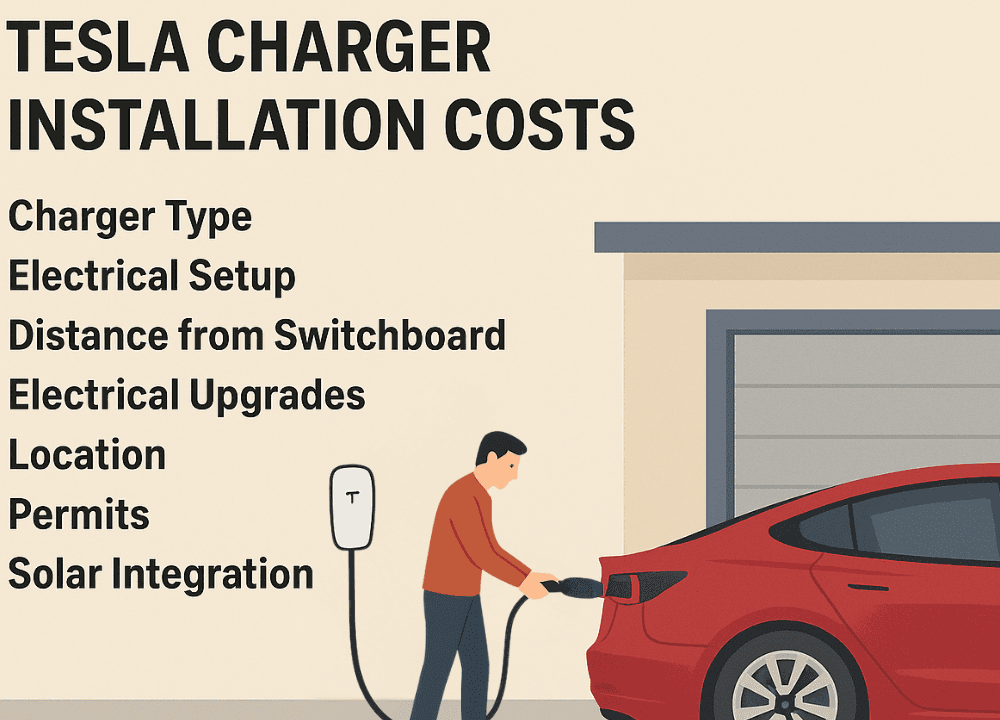
Cost Breakdown: Tesla Mobile Connector vs. Gen 3 Wall Connector
The price of installing a Tesla home charger in Australia can vary depending on the model you choose and the complexity of the electrical work required. Let’s break down the costs for each Tesla charger, including equipment and installation, to help you budget effectively.
Tesla Mobile Connector Costs
Equipment Cost:
Included with most Tesla vehicles in Australia. If you need to purchase one you can buy it from the Tesla Australia or Bunnings for $550 for a standard Mobile Connector.
Installation Cost:
- No New Outlet: If you have a 240-volt, 10-amp or 15-amp outlet near your parking spot, installation costs are $0. Simply plug in and charge.
- New Outlet Needed: Installing a new 15-amp outlet costs $200–$1,000, depending on the distance from the switchboard and wiring requirements.
- Electrical Upgrades: If your switchboard can’t handle the load, upgrades may add $100–$1,000.
Total Cost:
- Basic Setup: $0–$600 (if included or purchased, no new outlet needed).
- With New Outlet: $200–$1,600.
- With Upgrades: Up to $2,600 (rare, for complex setups).
▶️TRY: Calculate Your Tesla Charging Costs

Tesla Gen 3 Wall Connector Costs
Equipment Cost:
- The Tesla Wall Connector price in Australia typically falls between $750–$800 through Tesla’s website or authorised resellers like Bunnings.
Installation Cost:
- Standard Installation: If the charger is installed near the switchboard (e.g., in the garage), electrician fees range from $500–$1,000. This includes mounting, wiring, and connecting to a 32-amp circuit.
- Complex Installation: If the switchboard is far away (e.g., 15m or across a double-story home), or if trenching is needed, costs rise to $1,000–$1,800.
- Electrical Upgrades: Older homes may need a dedicated circuit or switchboard upgrade, adding $100–$1,000.
- Permits: Some areas require permits, costing $100–$300.
Total Cost:
- Basic Setup: $1,200–$1,800 (charger + standard installation, single-phase).
- Complex Setup: $2,000–$2,500 (three-phase, long cable runs, or upgrades).
- Average Quote: Around $1,544 for a typical single-phase installation (based on industry estimates).
▶️TRY: EV Charging Calculator
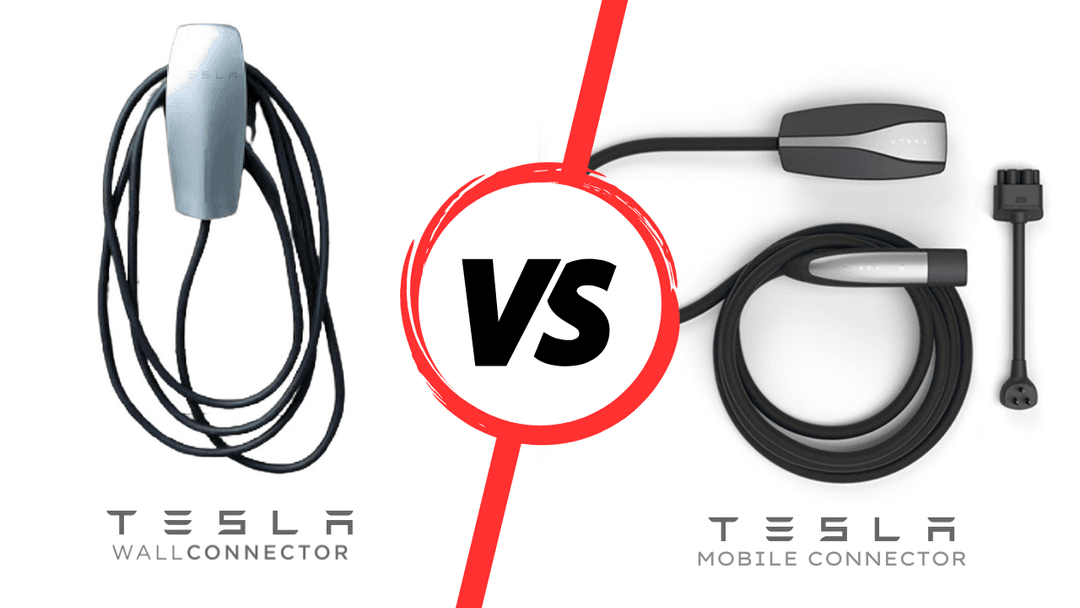
Comparing Costs: Mobile Connector vs. Wall Connector
| Charger Type | Equipment Cost | Installation Cost | Total Cost | Charge Speed (km/hr) |
| Mobile Connector (10-amp) | $0–$600 | $0–$1,000 | $0–$1,600 | 15 |
| Mobile Connector (15-amp) | $0–$600 | $200–$1,000 | $200–$1,600 | 25 |
| Gen 3 Wall Connector | $750–$800 | $500–$1,800 | $1,200–$2,500 | 40 (single-phase) / 130 (three-phase) |
Key Takeaway: The Mobile Connector is the budget-friendly option for light drivers or those with existing outlets, but its slower charging limits its useability if you drive longer distances e.g. 200km or more the day.
The Gen 3 Wall Connector, while pricier, offers faster charging and smart features, making it the better long-term investment for most Tesla owners.
How to Choose the Best Tesla Charger for Your Needs?
Picking the right charger depends on your driving habits, home setup, and budget. Follow these steps to make an informed choice:
1. Assess Your Daily Driving Distance
The average Australian drives about 40 km per day, according to the Australian Bureau of Statistics. Use this to estimate your charging needs:
- Mobile Connector (10-amp, 15 km/hr): Charging for 8 hours adds ~120 km of range, sufficient for most daily commutes.
- Mobile Connector (15-amp, 25 km/hr): 8 hours adds ~200 km, ideal for slightly longer drives.
- Wall Connector (7.4kW, 40 km/hr): 8 hours adds ~320 km, perfect for frequent drivers or quick top-ups.
- Wall Connector (22kW, 130 km/hr): Best for three-phase homes or heavy EV users, adding ~1,040 km in 8 hours.
Tip: If you drive less than 40 km daily and can charge overnight, the Mobile Connector is enough. For longer trips or faster charging, opt for the Wall Connector.
Work out the based on your personal circumstances.
➡️TRY: Work out the time and cost of charging your Tesla using our EV Charging Calculator

2. Check Your Tesla’s Charge Port Location
Measure the distance from your Tesla’s charge port (e.g., rear left on Model 3/Y, front left on Model S/X) to the nearest power outlet or planned charger location. The Mobile Connector’s cable is ~6m long, so if the outlet is farther, you may need a new outlet or the Wall Connector, which supports longer wiring runs.
3. Evaluate Your Home’s Electrical Setup
Consult a licensed electrician to check:
- Single-Phase vs. Three-Phase: Most Australian homes are single-phase (7.4kW max). Three-phase homes (22kW) are rarer but support faster charging.
- Switchboard Capacity: Older homes may need upgrades to handle a 32-amp circuit for the Wall Connector.
- Outlet Availability: For the Mobile Connector, a 10-amp or 15-amp 240-volt outlet must be nearby.
4. Consider Solar or Battery Integration
If you have a solar system or home battery, the Gen 3 Wall Connector’s smart features let you charge using solar power or off-peak rates, reducing electricity costs. This requires compatible wiring and may add $200–$500 to installation of your Tesla charger but saves money long-term.
5. Budget for Future Needs
If you plan to upgrade your Tesla or add another EV, the Wall Connector’s higher capacity and smart features make it a future-proof choice. Its ability to balance load across multiple chargers is also handy for multi-EV households.
Tips to Save on Tesla Charger Installation in Australia
- Shop Around for Quotes: Compare Tesla charger installation costs across Australia by getting multiple quotes from Tesla-certified electricians.
- Check for Rebates: States like NSW and Victoria offer EV charger rebates (e.g., $200–$600). Visit your state’s government website for details.
- Use Existing Outlets: If you have a 240-volt outlet near your parking spot, stick with the Mobile Connector to avoid installation costs.
- Install Near the Switchboard: Placing the Wall Connector close to your electrical panel minimizes wiring costs.
- Plan for Solar: If you’re considering solar, install a compatible charger now to avoid future rewiring.
Special Note: Charging in Apartments
If you live in an apartment, installing a Tesla charger is more complex due to strata approvals and shared electrical infrastructure. Costs can exceed $3,000, depending on the building’s wiring and strata policies.
Check out our article on EV charging in apartments for guidance on navigating strata and exploring kerbside charging options.
▶️MORE: The Apartment EV Charging Guide You Need
Final Thoughts: Invest in Your Tesla’s Future
Installing a Tesla charger at home is a smart move for convenience, cost savings, and maximising your EV experience. For budget-conscious Tesla owners, the Mobile Connector offers a low-cost solution (as little as $0–$1,600) for light drivers with existing outlets. However, the Gen 3 Wall Connector ($1,200–$2,500) is the superior choice for faster charging, smart features, and future-proofing your setup.
About the author
Stay up to date with the latest EV news
- Get the latest news and update
- New EV model releases
- Get money savings-deal

